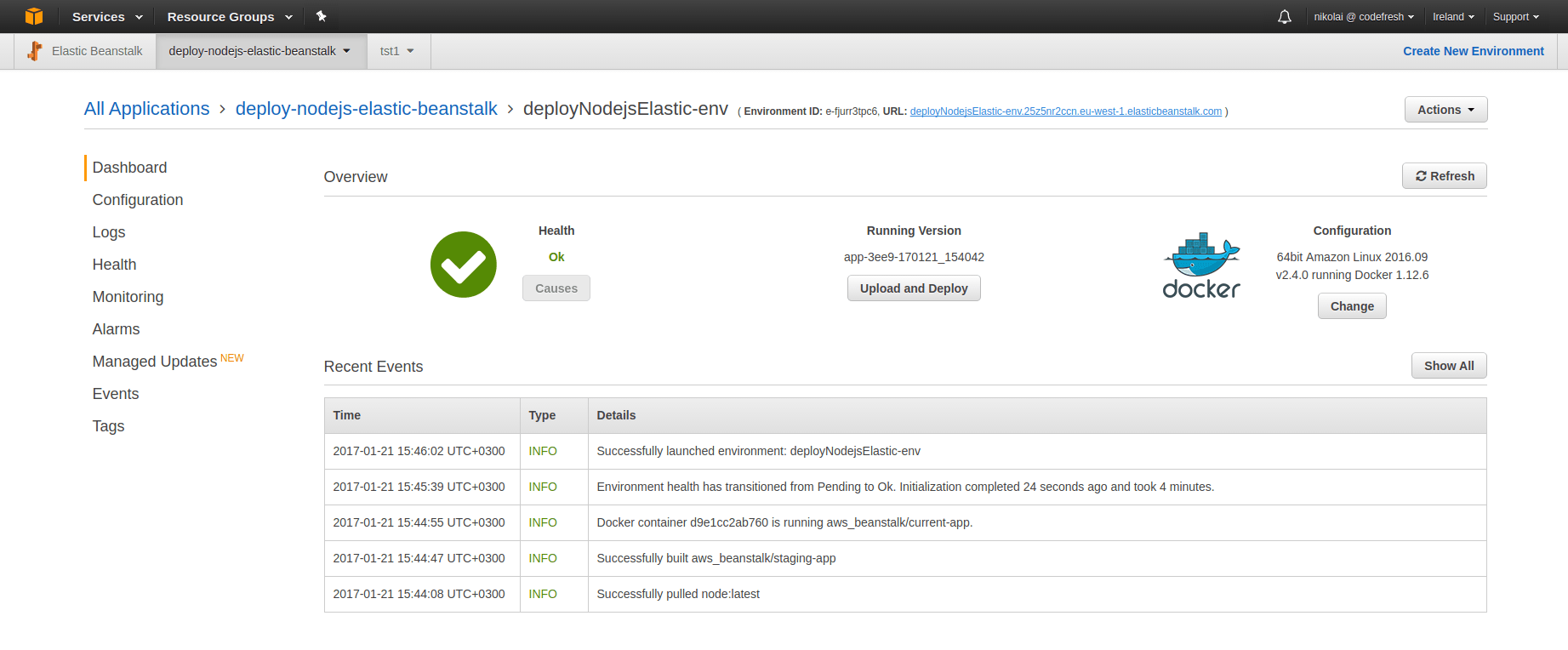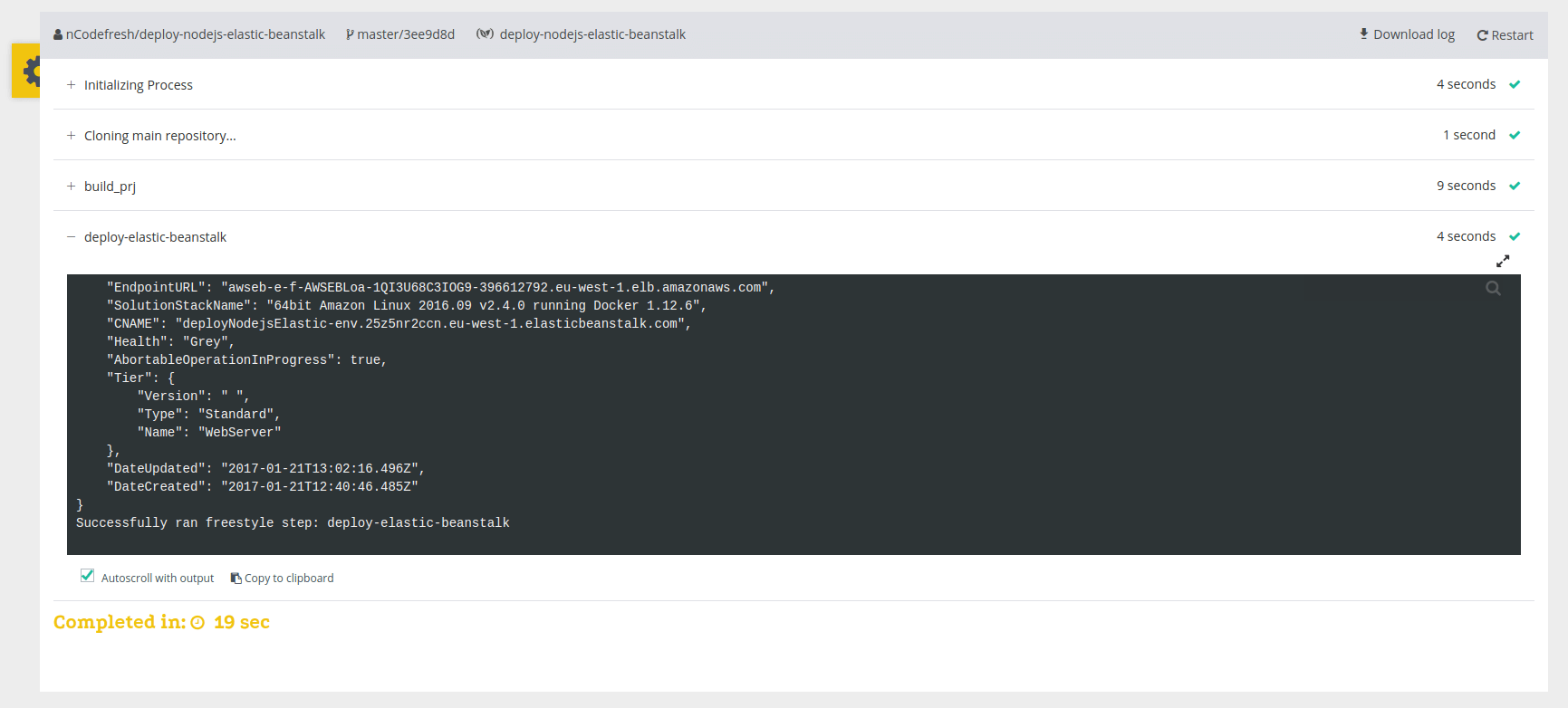Deploy to Elastic Beanstalk
Prerequisites
- Configured Application in Elastic Beanstalk service
See: http://docs.aws.amazon.com/elasticbeanstalk/latest/dg/GettingStarted.html
Deployment with Codefresh
- Add encrypted environment variables for AWS credentials:
AWS_ACCESS_KEY_IDAWS_SECRET_ACCESS_KEY
- Provide the following environment variables:
AWS_REGIONAWS_ENV_NAMEAWS_VERSIONAWS_BRANCH
TIP
The $ of application you can find in the Elastic Beanstalk service.
TIP
The $ of application you can find in the Elastic Beanstalk service.
Add the following step to codefresh.yml:
deploy_step
deploy-elastic-beanstalk:
fail-fast: false
image: garland/aws-cli-docker:latest
commands:
- sh -c "aws configure set region '${{AWS_REGION}}' && aws elasticbeanstalk update-environment --environment-name '${{AWS_ENV_NAME}}' --version-label '${{AWS_VERSION}}' "
when:
condition:
all:
masterBranch: "'${{CF_BRANCH}}' == '${{AWS_BRANCH}}'"Deployment Flow
- Go to the Elastic Beanstalk service and create an application and environment.
- Perform the following commands from root of your project:
- eb init
- eb create
${{AWS_ENV_NAME}}
NOTE
If you don’t haveawsebcli, install EB CLI.
- Add this repository to Codefresh, provide the necessary environments variables and build this service





